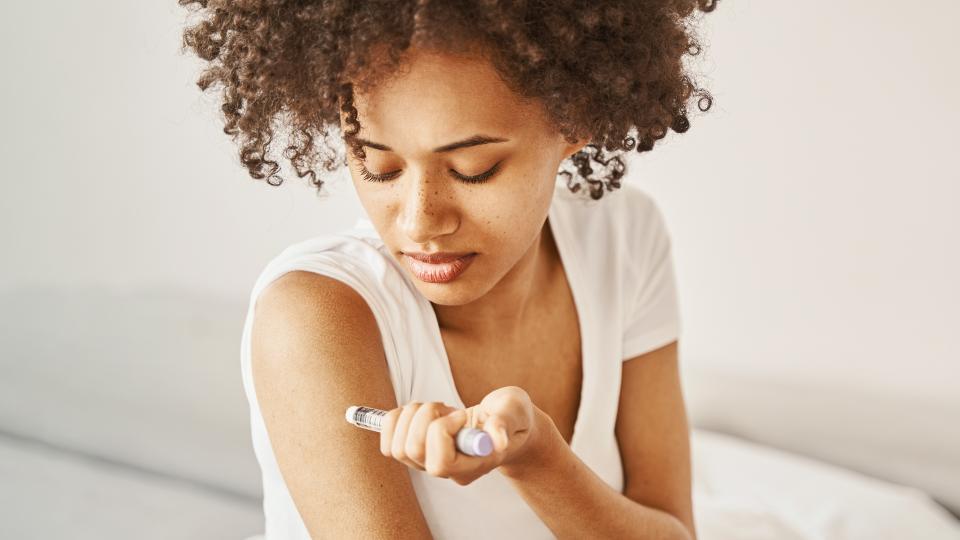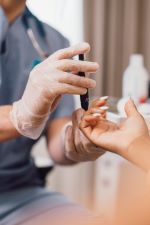At Cigna Healthcare, our diabetes care solutions are built around a whole-person health strategy. The aim is to help identify, prevent and manage diabetes by connecting individuals to the right level of care. We look at some of the ways our approach has helped patients save money, and improves medication adherence and health outcomes.

The price of insulin has been on a steady rise over the years, particularly in the United States.
In fact, the U.S. represents only 15% of the global insulin market, but generates nearly 50% of the industry’s insulin revenue. According to research from the American Action Forum, the average list price of insulin set by drug manufacturers increased 11% annually from 2001 to 2018, with an average annual cost of almost $6,000 per patient.
According to the CDC, 130 million adults have diabetes or prediabetes in the United States. Adults with a family income below the federal poverty level have the highest prevalence of diabetes (13.7% of men and 14.4% of women), and researchers at Yale University found that one in four patients have skimped on insulin because of its high cost.
Untreated diabetes can result in complications such as heart disease, kidney disease, stroke, vision loss, hearing loss, foot issues, and mental health issues.
At Cigna Healthcare, our diabetes care solutions are built around a whole-person health strategy. The aim is to help identify, prevent and manage diabetes by connecting individuals to the right level of care. Below we look at some of the ways our approach has helped patients save money, and improves medication adherence and health outcomes.
Protecting Patients From High Out-of-Pocket Costs
Express Scripts and The Cigna Group's integrated pharmacy benefit manager launched the Patient Assurance Program in 2019 to guarantee that patients in participating plans pay only $25 out of pocket for each one-month supply of insulin from network pharmacies. In July 2020, the program was expanded to include non-insulin diabetes treatments, including DPP-4 inhibitors, GLP-1 agonists, and SGLT2 inhibitors, also with a $25 out-of-pocket cost. For people who do not get employer-sponsored insurance coverage, the program is also available to individuals and families. (when the plan is enrolled in the program) who purchase health insurance under the Affordable Care Act.
Patient savings are substantial. People taking insulin saved more than $18 million with point-of-sale discounts secured through the Patient Assurance Program in 2022 alone, totaling more than $45 million in patient savings on insulin since the program launched. In total, approximately 395,000 patients with diabetes received financial relief of nearly $78 million when their plan sponsor enrolled in the Patient Assurance program in 2022.
Among insulin users enrolled in the program:
- Patient cost (pharmacy plus medical) was 40.65% lower than those not enrolled
- Patient cost for households with incomes lower than $50K was lower by 43%
Among non-insulin hypoglycemic therapy users (typically Type 2 diabetics) enrolled in the program:
- Patient cost (pharmacy plus medical) was 50.5% lower than those not enrolled – resulting in $135 million in total savings since 2020.
- Patient households with incomes lower than $50K saw higher adherence by 5.7% and lower cost by 50.5% compared to those not enrolled
The health benefits of the Patient Assurance Program are substantial as well. Our research found that people newly diagnosed with Type 1 diabetes or who filled an insulin prescription for the first time were 30% more likely to continue therapy if they were enrolled in the Patient Assurance Program, compared with people who were not enrolled.
That’s because the program also focuses on coordinated diabetes management, in addition to giving patients cost savings. Customers get access to trained clinicians, who work with people to help them stay on track with their medicine, assuring they are using it correctly. In addition, the clinicians provide counseling about other facets of diabetes care, such as weight control, even providing patients a digital scale when needed.
New research from Express Scripts measured adherence – taking medicine as prescribed – in people using non-insulin hypoglycemic agents used to treat Type 2 diabetes. Those enrolled in the Patient Assurance program improved adherence to their diabetes treatments by 2.5%. When researchers looked at people with household incomes less than $50,000, the data showed adherence improved by 5.7%.
“At Cigna Healthcare, we are always striving to make health care more affordable and to deliver better health outcomes,” said Dr. Scott Josephs, chief medical officer, Cigna Healthcare. “The Patient Assistance Program does both – and as we continue to expand the program, we’ll be able to help even more people get the medicines they need for just $25 a month.”
Lowering Costs Through Improved Health Outcomes
Our Diabetes Prevention Program is a program we offer through our partnership with Omada. Omada is an online app that provides behavioral counseling to people with prediabetes and those at risk for developing diabetes and is available to eligible Cigna Healthcare customers at no additional cost. The program includes:
- A full-time health coach to keep participants on track
- A wireless scale to monitor progress
- An interactive program that adapts to the participant
- Weekly online lessons to educate and inspire
- A small group of participants for real-time support
In addition to improving health outcomes, the program has demonstrated average medical cost savings of $348 in year one per participant and $989 through year two.
Separately, the Diabetes Care Value program, which is part of the SafeguardRX platform, leverages digital health solutions, a quality pharmacy network, specialized support, and cost management tools to help prevent diabetes in those at-risk, as well as improve outcomes and better coordinate care for people who have diabetes; and reduce costs overall. Plans enrolled in the program experienced -0.8% diabetes drug trend in 2020, whereas nonparticipating plans saw 21.5% trend.

Cigna Healthcare Diabetes Insurance for Individuals and Families
In addition to our standard diabetes coverage, our Diabetes Care Plans offer more ways to save on select diabetic supplies, equipment, labs, and exams.